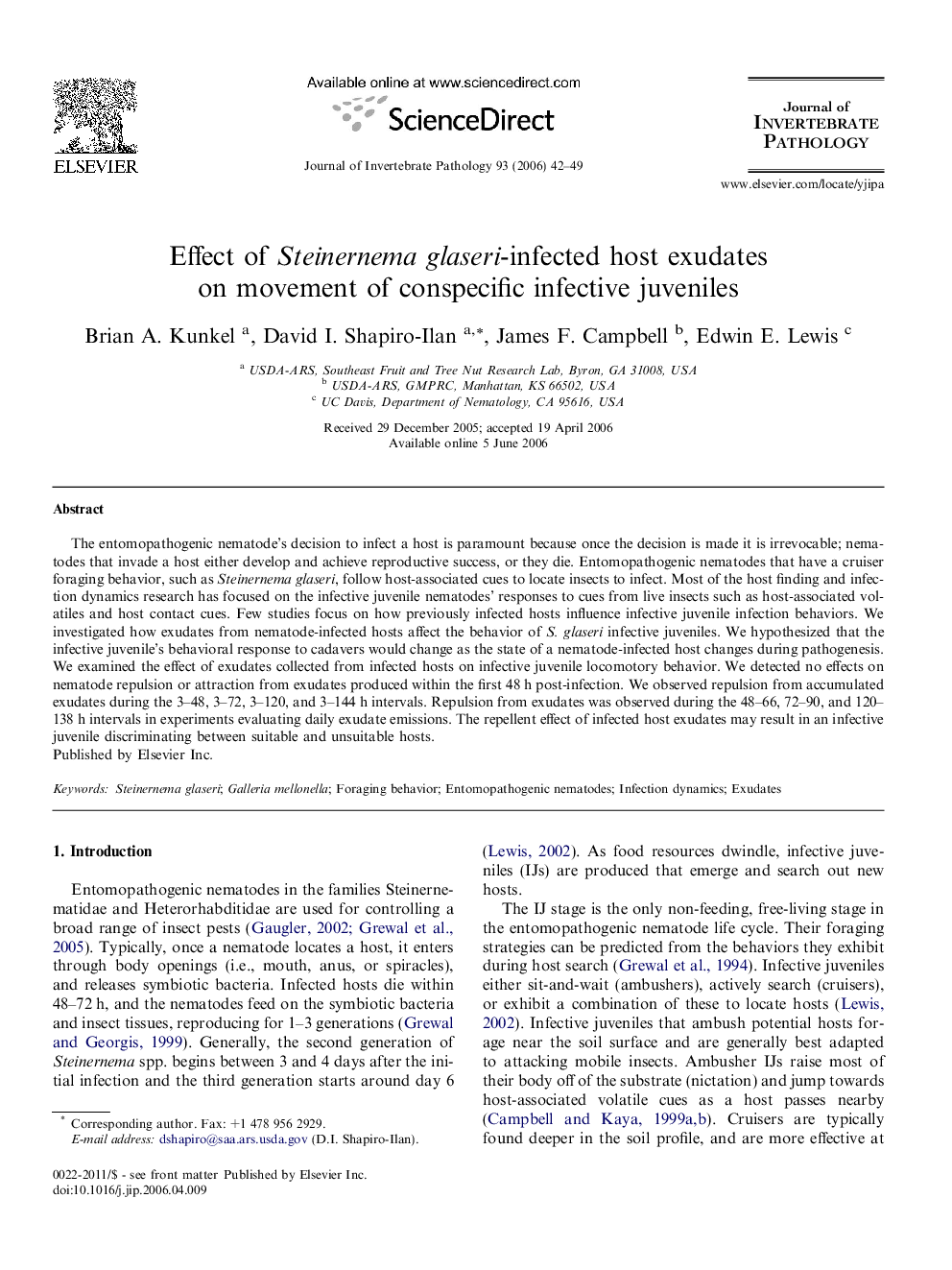| Article ID | Journal | Published Year | Pages | File Type |
|---|---|---|---|---|
| 4558718 | Journal of Invertebrate Pathology | 2006 | 8 Pages |
The entomopathogenic nematode’s decision to infect a host is paramount because once the decision is made it is irrevocable; nematodes that invade a host either develop and achieve reproductive success, or they die. Entomopathogenic nematodes that have a cruiser foraging behavior, such as Steinernema glaseri, follow host-associated cues to locate insects to infect. Most of the host finding and infection dynamics research has focused on the infective juvenile nematodes’ responses to cues from live insects such as host-associated volatiles and host contact cues. Few studies focus on how previously infected hosts influence infective juvenile infection behaviors. We investigated how exudates from nematode-infected hosts affect the behavior of S. glaseri infective juveniles. We hypothesized that the infective juvenile’s behavioral response to cadavers would change as the state of a nematode-infected host changes during pathogenesis. We examined the effect of exudates collected from infected hosts on infective juvenile locomotory behavior. We detected no effects on nematode repulsion or attraction from exudates produced within the first 48 h post-infection. We observed repulsion from accumulated exudates during the 3–48, 3–72, 3–120, and 3–144 h intervals. Repulsion from exudates was observed during the 48–66, 72–90, and 120–138 h intervals in experiments evaluating daily exudate emissions. The repellent effect of infected host exudates may result in an infective juvenile discriminating between suitable and unsuitable hosts.
